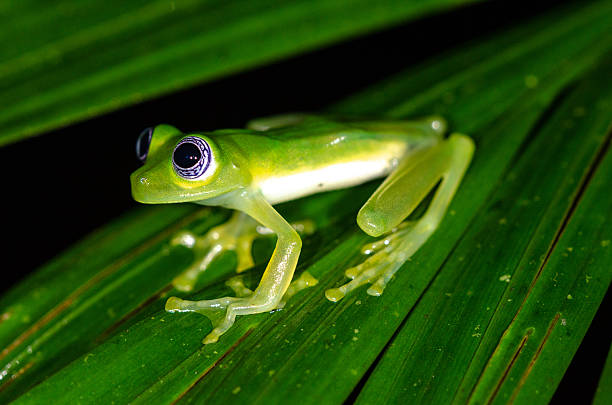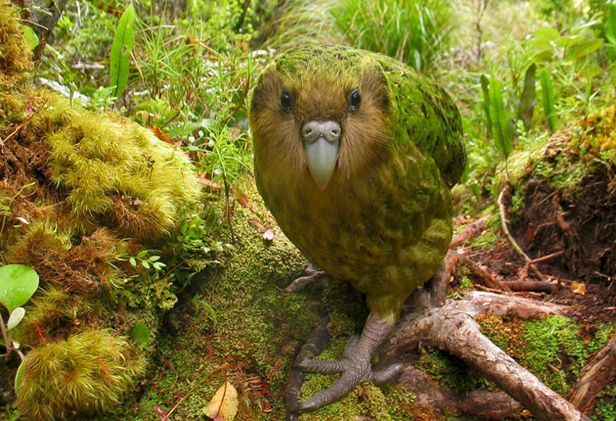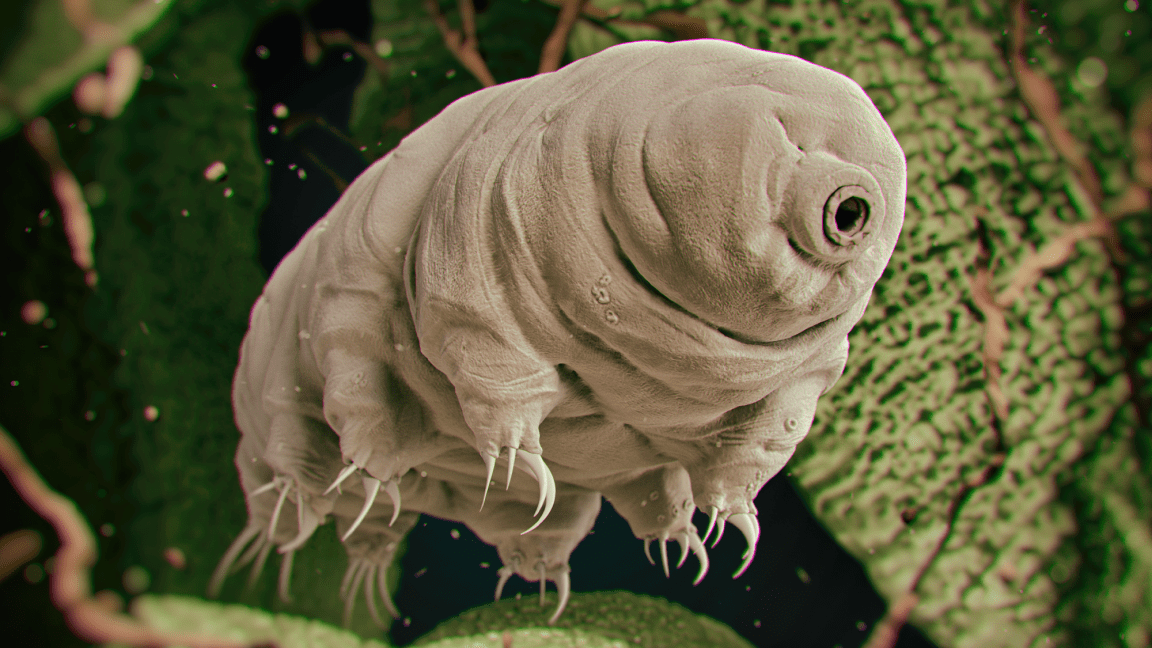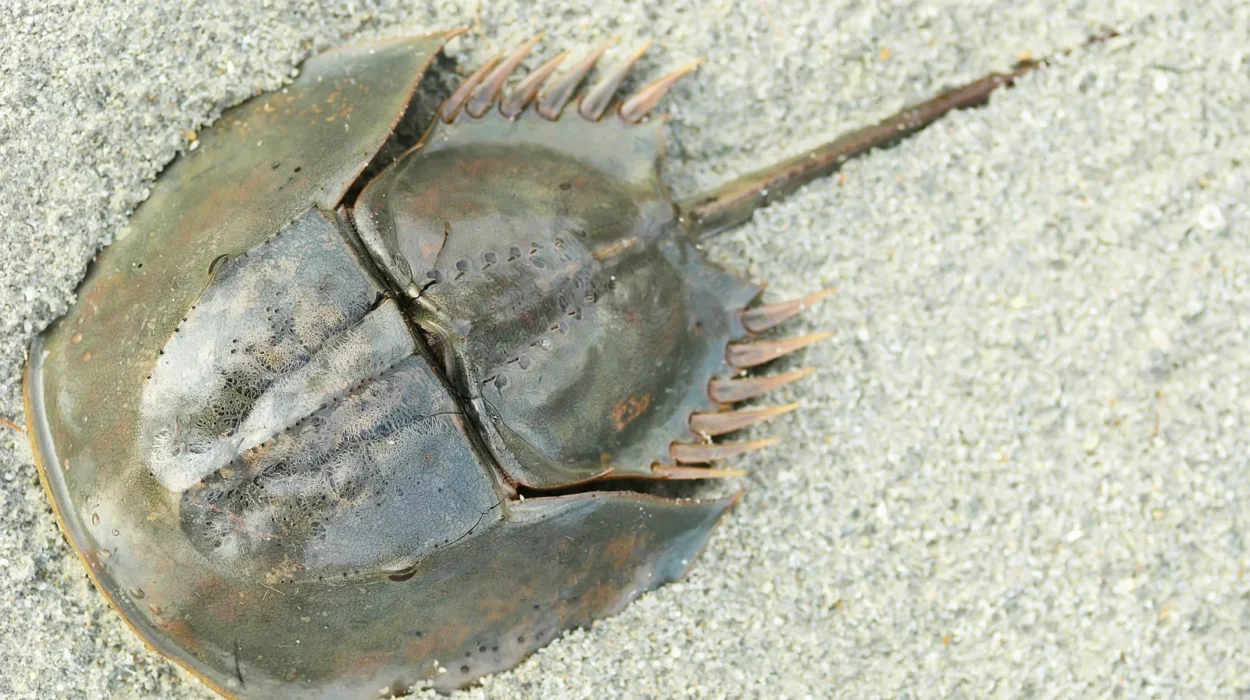Among the endless wonders of nature, few animals inspire as much curiosity and fascination as the glass frog. These tiny, delicate amphibians look like something out of a dream—or perhaps a science fiction story. With translucent skin that reveals their beating heart and inner organs, glass frogs seem to defy nature’s usual rules of concealment. They live high in the tropical canopies of Central and South America, moving through rain-soaked leaves in the shadows of the night.
The glass frog is one of nature’s most intriguing examples of transparency in vertebrates. Its see-through skin serves as both a marvel of evolution and a puzzle for scientists who continue to study its purpose and function. Beyond its unusual appearance, this frog represents a delicate balance between beauty, adaptation, and survival. Understanding the glass frog means exploring not only its biology but also the complex rainforest ecosystems that sustain it, the evolutionary pressures that shaped it, and the scientific mysteries it continues to pose.
The Discovery and Naming of the Glass Frog
The name “glass frog” refers to the amphibians belonging to the family Centrolenidae, derived from the Greek kentron (meaning “sharp point”) and hyalos (meaning “glass”). These frogs were first described scientifically in the 19th century, though indigenous peoples living in Central and South America had known of their existence long before Western scientists ever encountered them.
The earliest specimens were collected from the rainforests of Colombia and Ecuador during exploratory expeditions in the 1870s. Their translucent underbellies immediately caught the attention of naturalists. Under bright light, the frogs’ internal organs—heart, liver, intestines, and even circulating blood—could be seen as clearly as though viewed through glass. This characteristic led to their evocative common name, which captures their ethereal, almost otherworldly beauty.
Today, over 150 species of glass frogs have been identified, and new ones continue to be discovered in remote forest regions. They are distributed primarily across the humid tropical and subtropical forests of Central and South America, from southern Mexico to Argentina. Each species varies in size, color, and degree of transparency, yet all share the same enchanting quality that defines the group.
Where Glass Frogs Live: The Cloud Forest Habitat
The glass frog’s world is one of mist, rain, and perpetual green. These amphibians inhabit the lush forests that stretch across Central and South America’s tropical mountain ranges, particularly the Andes. They are most commonly found in cloud forests—ecosystems characterized by high humidity, frequent rainfall, and persistent low-level clouds that cling to the mountainsides.
These habitats provide ideal conditions for glass frogs. The constant moisture keeps their permeable skin hydrated, while the dense vegetation offers both food and shelter. During the day, they remain hidden on the underside of leaves or in the crevices of moss-covered branches. At night, when humidity rises and temperatures drop, they emerge to hunt insects and to call for mates.
Most glass frogs live near running water—streams, rivers, and waterfalls—where they breed and lay eggs. The sound of rushing water masks their calls from predators, while the moist environment ensures the eggs do not dry out. Because of their dependence on pristine freshwater habitats, glass frogs serve as excellent bioindicators: their presence or absence often signals the overall health of the environment.
Anatomy and the Science of Transparency
Perhaps the most remarkable feature of glass frogs is their transparent or translucent skin. When viewed from below, the abdominal area of these frogs reveals a clear window into their inner anatomy. The heart pulses visibly in the center of the chest, the liver gleams faintly white, and the digestive organs can be seen wrapped in a delicate web of blood vessels.
This degree of transparency is extremely rare among vertebrates. Most animals that appear transparent are small aquatic species such as jellyfish or larval fish, whose tissues closely match the refractive index of water. Glass frogs, however, are terrestrial amphibians, living in air—an environment where transparency is much harder to achieve due to differences in how light interacts with body tissues.
Scientists have long sought to understand why glass frogs evolved this trait. For many years, it was assumed that their transparency served as a form of camouflage, helping them blend into their leafy surroundings. Recent research has revealed that this assumption is partly true—but not in the way once thought.
A 2020 study using advanced imaging and behavioral analysis found that glass frog transparency acts more like a “soft outline” camouflage. Instead of completely disappearing into the background, their see-through skin reduces the sharpness of their body edges, making them less detectable to predators. When resting on green leaves, their pale green upper surface and translucent belly make it difficult for birds and snakes to distinguish them from their surroundings.
Moreover, their transparency is not uniform. The back is typically light green or yellowish with small spots, while the underside is clear. This contrast creates a gradient that helps them blend seamlessly with both the light filtering through the leaves and the shadows beneath them.
How the Glass Frog’s Body Works
Despite their delicate appearance, glass frogs are highly specialized for their environment. Most species are small, measuring between 2 to 3 centimeters in length, though some can grow slightly larger. Their bodies are slender and agile, with long limbs adapted for leaping and climbing. The fingers and toes are tipped with adhesive pads that help them grip smooth, wet surfaces like leaves or rocks near streams.
Their skin, thin and moist, performs vital physiological functions beyond transparency. Like all amphibians, glass frogs absorb oxygen directly through their skin, supplementing the oxygen they take in through their lungs. This makes them particularly sensitive to environmental changes such as pollution, temperature shifts, and habitat destruction.
The digestive and circulatory systems of glass frogs are clearly visible through their transparent abdomens. The heart, typically three-chambered as in other amphibians, beats rhythmically at the center. During periods of rest, researchers have observed that the frogs can control the visibility of their blood. They have the extraordinary ability to conceal nearly 90% of their red blood cells within the liver, which acts as a temporary storage organ. This reduces the color contrast of their blood and enhances their transparency—an adaptation that may further aid in camouflage.
The Unique Vision and Hearing of Glass Frogs
Glass frogs are primarily nocturnal, relying heavily on their vision and hearing to survive in the dim rainforest. Their eyes are one of their most distinctive features: large, round, and often golden or silver in color, they sit high on the head, giving the frog nearly panoramic vision. This adaptation allows them to detect predators and prey both above and below while remaining almost motionless.
Unlike many other frogs, glass frogs rely less on croaking during the day and more on visual cues at night. Males produce soft, high-pitched calls that are sometimes barely audible to human ears. These calls serve both to attract females and to mark territory against rival males. Each species has its own distinctive call pattern, which helps prevent crossbreeding among similar species living in the same habitat.
The frogs’ eardrums, or tympana, are typically small and difficult to see, but they are highly sensitive to vibrations. This sensitivity allows them to detect not only sound waves in the air but also subtle tremors on the leaves and branches around them—a crucial ability in an environment where predators can approach silently.
The Life Cycle and Reproduction of Glass Frogs
Like all amphibians, glass frogs have a complex life cycle that includes both aquatic and terrestrial stages. Reproduction usually occurs during the rainy season, when humidity is high and food is abundant. Males gather near streams and rivers, where they call to attract females.
Once a female responds to a male’s call, courtship begins. The male mounts the female in a position known as amplexus, in which he clasps her around the waist. Fertilization is external: the female lays a clutch of eggs on the underside of a leaf overhanging a stream, while the male simultaneously releases sperm to fertilize them.
The eggs are transparent, like the frogs themselves, and develop in gelatinous clusters. This unique placement above the water is crucial—it protects the eggs from aquatic predators while keeping them moist in the humid air. The translucent jelly coating also allows sunlight to reach the embryos, aiding development.
The glass frog’s parental behavior is one of the most fascinating aspects of its biology. In many species, the male guards the eggs diligently, keeping them hydrated by pressing his moist body against the cluster or by transporting water droplets using his limbs. If the eggs dry out, the embryos can die before hatching. The male also defends the clutch against predatory insects or other frogs that might consume the eggs.
After one to two weeks, the eggs hatch into tiny tadpoles, which drop directly into the stream below. These tadpoles are also semi-transparent, blending with the streambed. They feed on detritus and algae as they grow, gradually developing legs, lungs, and the ability to live on land. The complete metamorphosis into a juvenile frog may take several months, depending on the species and environmental conditions.
Camouflage, Predation, and Survival
In the dense rainforest, survival depends on invisibility. The glass frog’s see-through skin is its most effective defense, but it is complemented by a host of behavioral and physiological adaptations. During the day, glass frogs rest on the underside of leaves, where their transparency and greenish hue make them almost indistinguishable from the vegetation.
Predators include birds, snakes, spiders, and larger frogs. To evade them, glass frogs rely on stillness and subtlety rather than speed. Their semi-transparent skin reduces the contrast between their body and the leaf, especially when viewed from below through filtered sunlight.
At night, when they become active, their behavior shifts. They move slowly and deliberately, minimizing motion that might catch a predator’s eye. Some species have been observed choosing resting spots with specific light conditions that enhance their camouflage.
The ability to control blood visibility adds another layer to their defense. By hiding red blood cells within the liver, glass frogs can effectively become more transparent when they sleep. When awake and active, their blood circulates normally, restoring oxygen to their tissues. This remarkable adaptation is still being studied, as it may hold insights into biomedical fields such as thrombosis and oxygen regulation.
Evolutionary Origins of Transparency
Transparency is a common evolutionary strategy among aquatic animals but an exceptional one among land-dwellers. In water, where light scatters less and refractive indices between body tissues and the surrounding medium are similar, being transparent is easier to achieve. In air, however, the differences in light refraction between tissues and the environment make transparency rare and difficult to maintain.
The evolution of transparency in glass frogs likely arose as an adaptation to their specific ecological niche. Living in humid forests with abundant leaves and dappled light, these frogs benefit from a camouflage strategy that blurs their outlines rather than completely hiding them. Natural selection may have favored individuals with lighter, more translucent skin, eventually leading to the extreme transparency seen today.
Molecular studies suggest that the family Centrolenidae diverged from other tree frogs approximately 40 million years ago. Their unique skin structure involves a reduction in pigment cells, especially melanophores, which normally provide coloration. Additionally, their skin layers have evolved specialized transparency and light-scattering properties that make them nearly invisible against a green backdrop.
Glass Frogs in the Ecosystem
Although small, glass frogs play an essential role in their ecosystems. As insectivores, they help control populations of mosquitoes, flies, and other insects. In turn, they serve as prey for higher-level predators such as birds, reptiles, and mammals. Their eggs and tadpoles also contribute to the aquatic food web, providing nourishment for aquatic insects and fish.
Because of their sensitivity to environmental changes, glass frogs are considered important indicators of ecosystem health. Amphibians in general are highly vulnerable to pollutants, climate change, and habitat degradation because of their permeable skin and complex life cycles. When glass frog populations decline, it often signals broader ecological distress, including deforestation, water contamination, or climate shifts that affect humidity and temperature.
Threats and Conservation Challenges
Despite their adaptability, many species of glass frogs are now threatened. The primary danger comes from habitat loss due to deforestation, agriculture, and urban expansion. Logging and road construction fragment their rainforest homes, reducing breeding sites and exposing them to predators and disease.
Another serious threat is climate change. Shifts in temperature and rainfall patterns alter the delicate balance of their moist habitats. Extended dry periods can dry out eggs or reduce the flow of breeding streams.
Pollution, particularly from pesticides and heavy metals, poses additional challenges. Because glass frogs absorb substances directly through their skin, they are extremely susceptible to chemical contamination. Even small concentrations of pollutants can disrupt their reproductive systems or cause fatal deformities in developing embryos.
A further danger comes from disease—especially the chytrid fungus (Batrachochytrium dendrobatidis), which has devastated amphibian populations worldwide. This pathogen infects the skin, interfering with respiration and hydration. Some glass frog populations have shown resilience, while others have suffered significant declines.
Conservationists are working to protect glass frog habitats through reforestation programs, ecological reserves, and community education initiatives. Captive breeding programs in research institutions also aim to safeguard genetic diversity and reintroduce frogs into the wild where possible.
Scientific Research and Biomedical Insights
Beyond their ecological and aesthetic significance, glass frogs are increasingly important in scientific research. Their unique transparency provides biologists with a rare opportunity to observe living internal organs without invasive procedures. Researchers can study cardiac rhythms, blood circulation, and organ development in real time, offering insights that could inform human medical science.
The frog’s ability to store red blood cells without clotting offers particular promise for biomedical research. Understanding how they prevent thrombosis during these periods could inspire new treatments for human blood disorders. Moreover, studying their light-filtering skin structures could influence innovations in optics, camouflage materials, and bioengineering.
Cultural and Symbolic Significance
Beyond the laboratory and forest, the glass frog holds a special place in art, folklore, and conservation awareness. In many Latin American cultures, frogs symbolize fertility, rain, and transformation—fitting for a creature that bridges the worlds of water and air, visibility and invisibility.
For local communities, glass frogs are also a symbol of environmental stewardship. Their fragility mirrors that of the rainforests they inhabit, reminding people of the delicate interconnectedness of all life. Artists and environmentalists often use the image of the glass frog to raise awareness about habitat conservation and the urgent need to protect biodiversity.
The Mystery That Remains
Even after decades of research, the glass frog continues to puzzle scientists. Why did such an unusual degree of transparency evolve in a terrestrial animal? How do they control their blood flow with such precision? What genetic mechanisms underlie their translucent skin?
As technology advances, researchers are beginning to uncover answers. Genomic studies are revealing the molecular pathways involved in pigment suppression and light scattering. Advanced imaging is showing how their tissues interact with light at microscopic levels. Yet many mysteries remain unsolved. Each discovery only deepens the sense of wonder surrounding these tiny creatures.
The Future of the Glass Frog
The survival of glass frogs depends on the survival of their forests. As global deforestation accelerates, protecting their habitats becomes increasingly urgent. Conservation efforts must integrate scientific research, community involvement, and sustainable development to ensure that these frogs—and the ecosystems they represent—endure.
Preserving glass frogs also means preserving the rainforests that sustain much of Earth’s biodiversity and climate balance. Each leaf they cling to, each stream they breed beside, forms part of a complex web of life.
The glass frog reminds us that nature’s most beautiful designs often serve deeper purposes—adaptations shaped by millions of years of evolution, refined for survival. In their translucent bodies, we glimpse not only the organs that sustain life but also the transparency of nature itself: the intricate, visible connection between form, function, and environment.
Conclusion
The glass frog stands as one of nature’s most exquisite oddities—a living testament to the creativity of evolution. Its see-through skin challenges our understanding of camouflage and adaptation, while its fragile existence highlights the vulnerability of life in a changing world.
To study the glass frog is to look through a window into both biology and philosophy. It invites us to see life not as something opaque or isolated, but as transparent and interconnected. Every heartbeat visible beneath its skin is a reminder of the delicate pulse of the rainforest—and of the planet we share.
As scientists continue to uncover the secrets hidden in its transparent body, one truth remains clear: the glass frog, in all its shimmering fragility, is one of nature’s finest reflections of wonder itself.






